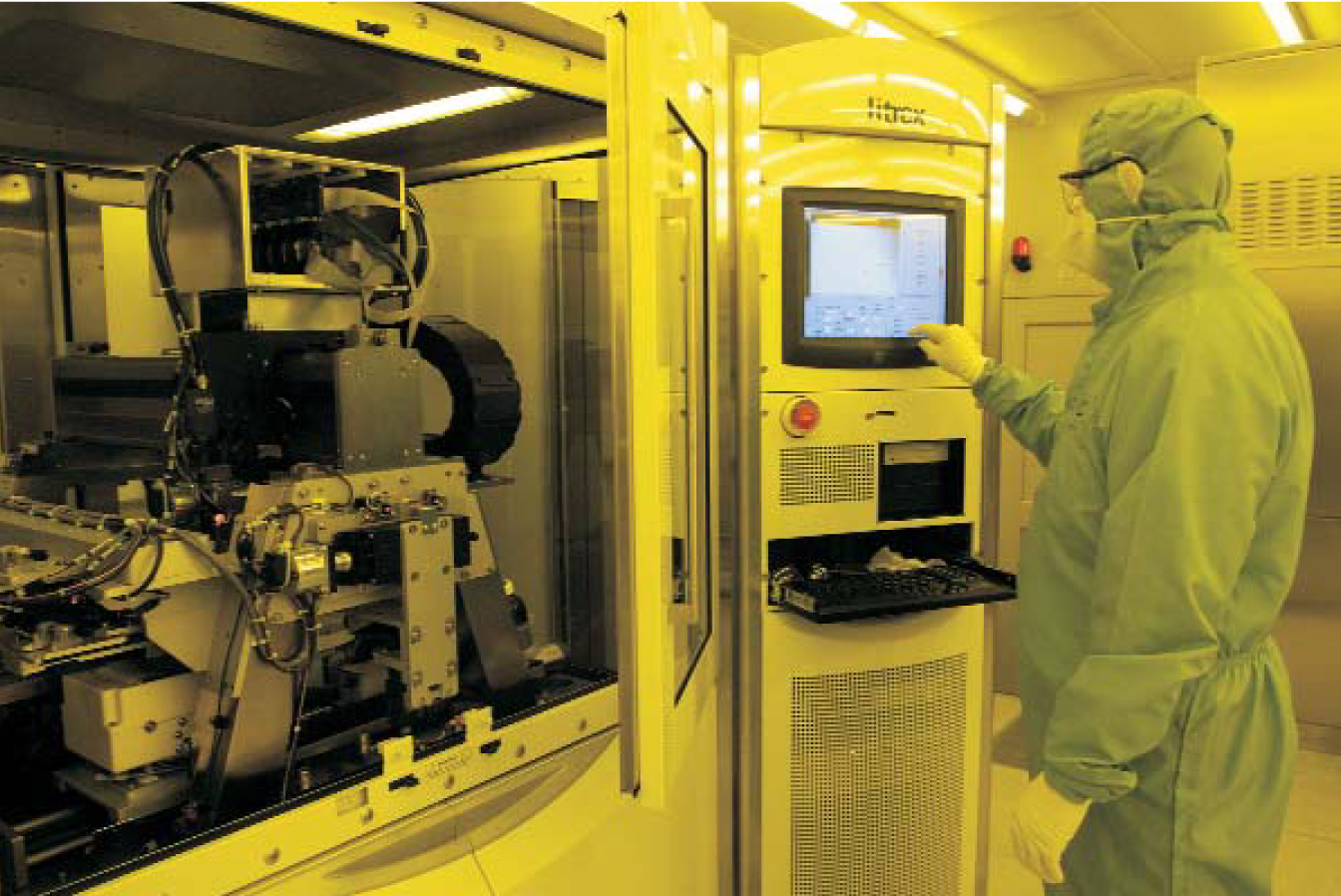Are organic LEDs ready for the big screen?
DOI: 10.1063/1.3027983
This year the first commercial organic LED TV hit the US market, some 20 years after the invention of a fluorescent diode by Eastman Kodak Co’s Ching Tang. Yet while the 3-mm-thin, 28-cm-diagonal TV from Sony Corp approaches the OLED promise of low-power, flexible products, other TV manufacturers have been slow to follow. Priced at $2500, Sony’s OLED TV—which, unlike LCDs, requires no backlight or filters—costs five to six times as much as a similarly sized LCD TV.
Most commercial OLED displays found in cell phones, other small consumer products, and Sony’s new TV are made by vacuum evaporation of small organic molecules. That process, however, is tricky to scale up. A competing process uses more scalable inkjet printing to make polymer OLEDs, but they lag behind the efficiencies of small-molecule diodes. To get both advantages and compete with the cost of LCDs and large-screen plasma TVs, some OLED manufacturers are exploring ways to make small molecules printable.
The spin on efficiency
Commercialization of OLED displays took off about 10 years ago after phosphorescent small-molecule OLEDs were invented by Stephen Forrest, a physicist now at the University of Michigan, and Mark Thompson, a chemist at the University of Southern California. As with inorganic LEDs, electrons and holes combine to form excitons, which emit light when they decay. For every four electron–hole pairs, one singlet and three triplet spin-state excitons are formed. In a fluorescent small-molecule system, the basis of Tang’s 1987 diode, only singlets emit light, which limits the quantum efficiency to 25%. However, in the technique advanced by Forrest and Thompson, triplets phosphoresce in addition to singlets fluorescing, and that raises the theoretical quantum efficiency to 100%.
An alternative OLED device that uses fluorescent polymers was invented in 1989 in the lab of University of Cambridge physicist Richard Friend. Researchers associated with Friend and Cambridge Display Technology Ltd, the company he founded, dismiss the claim that engineered polymer materials are constrained by a 25% theoretical ceiling. “We and others have done experiments that suggest that the singlet/triplet ratio is much higher in some of our materials than it is for a small molecule,” says CDT chief technology officer Jeremy Burroughes. “There certainly is potential for driving the singlet efficiency higher.” CDT’s new parent company is now building a process-development line to accelerate the mass production of polymer OLED TVs. “Polymer OLEDs will have advantages in screen size and cost” over small-molecule OLEDs if they can overcome efficiency, color-reproduction, and lifetime issues, says Sony communications officer Masayo Endo.
Printed picture
Besides quantum efficiency, manufacturers of OLED products are most concerned with the high cost of making large displays. The vacuum thermal evaporation process that patterns the red, blue, and green pixels for small-molecule OLEDs loses precision when scaled up. For small panels, “You can get away with less uniformity in the organic layers and less capable current-driving circuitry, but patterning colors is very difficult to do in larger sizes with current masking equipment,” says Columbia University electrical engineer Ioannis Kymissis.
Light-emitting polymers can be scaled up more easily, through spin-coating or ink-jet printing. In 2004 Seiko Epson Corp developed a 102-cm-diagonal polymer OLED TV prototype that used CDT’s technology. Now, the printer manufacturer is also collaborating with Universal Display Corp, holder of the original phosphorescent small-molecule patents, on a process that puts small molecules into solution for printing. Universal Display’s vice president of technology commercialization, Janice Mahon, says that direct printing is an exciting area, but she adds that vacuum evaporation processes can become cost-effective and commercially viable for large-area OLEDs. DuPont Displays Inc. has already developed a small-molecule printing process, says William Feehery, director of the company’s OLED business. “We are banking on [printing] as the future of OLED technology.”
Other factors play into the cost and performance of OLED displays. Manufacturers must reduce the cost of the thin-film transistor backplane needed to drive current through large-screen OLEDs, says Optoelectronics Industry Development Association president Michael Lebby. The lifetime of OLED emission has also been an issue, but researchers say the blue-light lifetime has now improved to around 20 000 hours, or six years of average TV use. Many OLED manufacturers, including Universal Display and CDT, have also improved the efficiency of OLED lighting, but with large commercial TVs now in sight, the immediate focus is on displays. “There’s been a lot of excitement in this field” since Sony’s TV was released, says Forrest, “but we still have more work to do.”

Inkjet printing is used to make polymer organic LED display prototypes at a Cambridge Display Technology Ltd pilot plant and is being explored by other manufacturers for small-molecule OLEDs.
CAMBRIDGE DISPLAY TECHNOLOGY LTD





